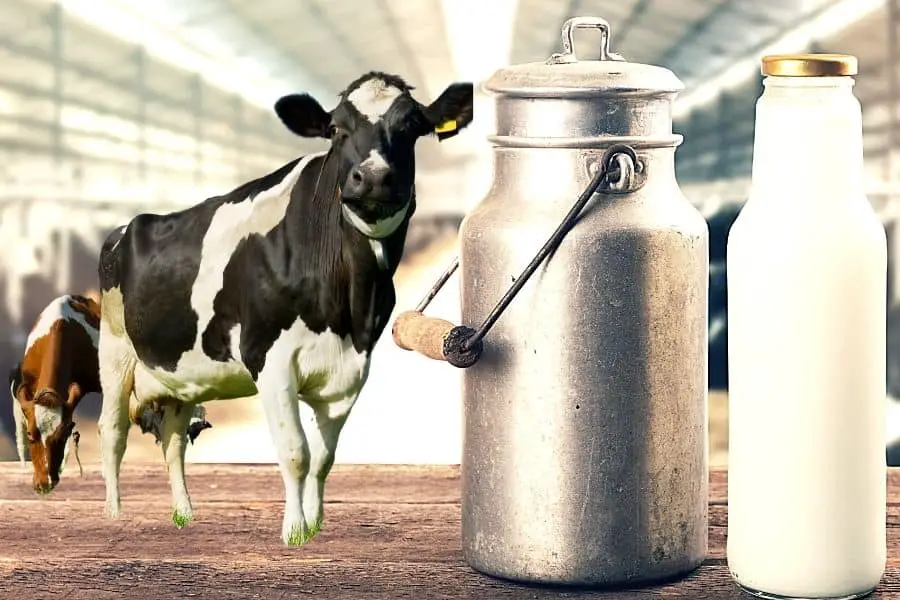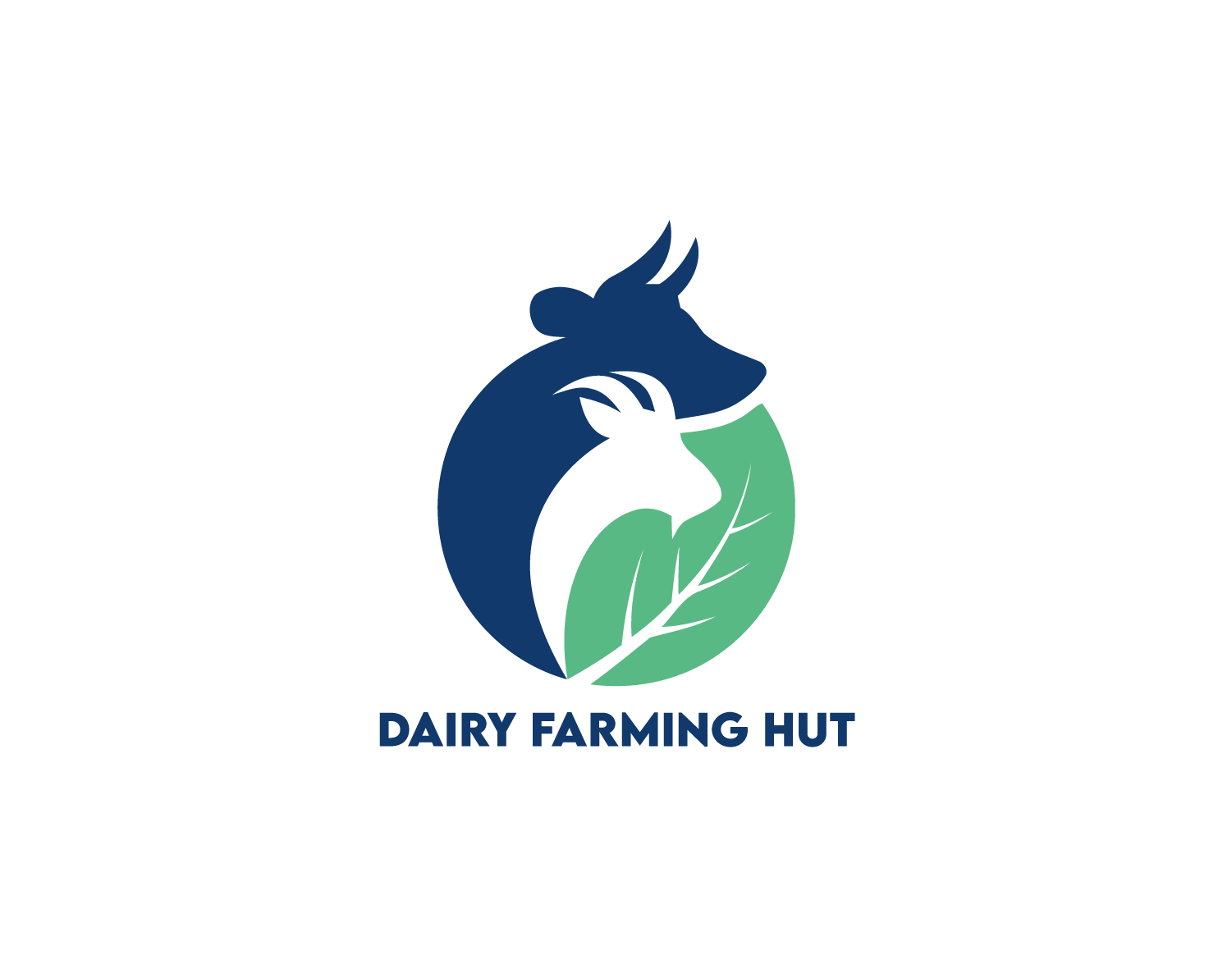Maintaining high milk production in dairy cows can be a challenge, especially in areas with challenging climates. However, there are many ways that farmers can increase milk production in their cows naturally while also keeping them comfortable and healthy.
Below you'll find ten simple steps for helping you reach peak milk production in your dairy herd naturally. Keep reading to learn more about different methods used to improve milk yield and keep dairy herds at their maximum productivity.
1) Manage Your Herd's Dry Period

The dry period in a dairy cow (when a dairy cow's milk is allowed to go dry) is an important development period for building the cow's milk back up before freshening. Cow body condition scores should be maintained at 3.0 throughout the dry period.
This is also a good time for dairy cows to be assessed for health issues that may affect their comfort and productivity, such as mastitis or hoof problems. These health concerns can decrease the cow's comfort, ultimately harming milk yield when the cow does start lactating again.
Also Read: Do Cows Feel Pain When Milked?
2) Increase Feed Quality After Calving
The period after calving is one of the most important periods for building up a dairy cow's milk yield, and feeding a poor quality feed during this time can hurt milk production. Improving feed quality is also an important part of preventing illness that impacts milk production, such as milk fever (low blood calcium).
Here are some ways to increase feed quality after calving:
- Provide drench in 10-15 gallons of warm water. Either commercial drench or apple cider vinegar at 30-40 milliliters is a good additive to protect gut health after calving and encourage milk production.
- Provide mixed rations: Mixed rations ensure a way to provide balanced nutrition across feed without cows having the ability to pick around the feed they don't like. Mixed rations are a way to keep cows well-nourished and milk yields high.
- Offer alfalfa and hay. Five to ten pounds of alfalfa and hay per head adds much-needed nutrition to dairy cows after calving. These supplements should be restricted to reduce slug feeding and bloat.
3) Avoid Milk Fever in Your Herd
One contributor to low milk yield that might not be immediately obvious is subclinical milk fever caused by lack of calcium in the blood. Milk fever can result from poor nutrition in lactating cattle, especially in those producing at a high yield.
These are some easy ways you can help avoid milk fever in your herd:
- Use anionic salts. Anionic salts are a mineral supplement that contains a high level of negatively-charged ions. These minerals allow the cow to easily access calcium from its bones to create blood calcium during milk production.
- Use a water hardness testing kit. Water hardness testing kits are a good option for farmers to easily and cheaply test blood calcium levels in their dairy herds at home rather than having to get a livestock vet to do it. Reading of low calcium in a water hardness test can indicate the need to use calcium supplements.
Subclinical milk fever is mild enough that it shouldn't cause serious medical problems in a cow. However, it can still act as one of the contributing factors that leads to a loss of milk production and a cow's inability to reach peak yield.
4) Maintain Your Herd's Digestive Health
Taking care of dairy cattle is best done from a holistic perspective, so focusing on nutrition and husbandry is just as important as addressing processes that directly affect milk collection. Poor digestive health leads to many problems that can decrease milk production, such as reduced feed intake and loss of appetite due to digestive upset.
Here are some methods you can use to naturally help maintain your herd's digestive health:
- Keep water consumption high. Lack of water access is a major driving factor in rumen impaction, which can lead to a wide variety of other medical issues or even death if left untreated. A gut-sick cow will not be producing milk at its best yields.
- Keep dairy cattle off sandy soil. Along with lack of water, rumen impaction can also result from dairy cattle being grazed on sandy soils, which leads to a build-up of sand in the rumen. Lactating dairy cattle have a high feed intake, which means they can accumulate foreign material in their rumen more quickly than beef cattle or dry period cows.
5) Assess Body Conditioning
Keeping an eye on your herd's body condition score is an underrated technique for improving milk yields. Cows that are overweight (over a body conditioning score of 3.0) will have reduced yield and are also harder to breed. Overweight cows can have more difficulties during birthing, leading to increased loss rates or vet visits.
Check out this video tutorial from Penn State Extension that shows farmers a visual breakdown of how to inspect their herd for body conditioning. You can use this inspection process to determine your herd's body conditioning score and adjust feed intake accordingly.
6) Avoid Poor Nutrition
Poor feed intake can contribute to dairy cows not keeping their milk production up after calving. There are lots of easy ways to improve nutrition without adjusting feed ratios or adding supplements.
Use these natural methods to make sure your cattle are getting the nutrition they need to keep production high:
- Make sure that feed bunks stay clean. A high ratio of mold or wild yeast in cattle feed can cause cattle to go off their feed and cause digestive upset.
- Use whole corn in cattle feed. Broken kernels of corn are more vulnerable to mold infestation than whole kernels.
- Learn how to identify mold and wild yeast infestations in the feed. If you open a bag of feed and it has a strong, musty smell or feels warm to the touch, these can be signs of mold infestation and fermentation.
Avoiding mold and other contaminants in feed improves feed's palatability, which increases feed intake and milk yield. It also helps preserve the nutritional integrity of the grains. Either way, you end up with healthier, happier dairy cows.
7) Provide Essential Vitamins
Along with avoiding factors that diminish nutrition, providing essential vitamins can give dairy cows the nutrition they need to avoid illness and boost milk production. Here are two of the most important vitamins you need to supplement to your herd to increase their milk yields:
- Vitamin E: Vitamin is an antioxidant that is associated with reduced oxidative stress and increased animal performance. Vitamin E is best supplemented during dry periods and early lactation. However, avoid overdosing Vitamin E to avoid the risk of subclinical mastitis (infection of the teats).
- Selenium: Selenium is a trace mineral that is vital for ruminants like cattle and goats to maintain nutritional health. Proper levels of selenium in dairy cattle are associated with reduced incidence of ovarian cysts and other health problems that can negatively impact milk yields.
8) Increase Dry Fodder for Increased Milk Yield
One mistake that many novice dairy farmers make is putting their dairy cattle on a grass that has too high of a moisture content. Because of the moisture in the feed, the cow is filling up on less dry feed than is necessary to maximize milk production.
Plenty of dry fodder should be provided to lactating dairy cows to provide the fuel they need to produce milk at the highest possible yield.
9) Increase Cow Comfort for Better Production
Dairy cattle aren't just affected by factors like nutrition or medical issues. The general comfort levels of the cattle and the reduction of their stress levels can also play a major role in how much milk they can produce over time.
Here are a few ways you can help make your cattle more comfortable:
- Handle cattle more gently. Like all prey animals, cows do not respond well to violent or aggressive handling, and the stress related to this can put them off their milk production.
- Provide shade and rest in cool weather. Try to handle dairy cattle early in the morning or at dusk when temperatures are cool to avoid getting the cows heated up while working them. The shade allows cows to better self-regulate their temperature and allows for a higher feed-to-milk ratio in the heat since the cow expends less energy staying cool.
- Think about enrichment. While it might seem silly to buy things like large rubber balls or other toys for dairy cattle to amuse themselves in the field, higher livestock enrichment is associated with higher levels of animal performance. Playing classical music has even been shown to improve milk production in Turkish dairy operations.
10) Winterize Your Dairy Herd
Along with keeping cows cool in the summer to increase milk yields, it's also important to winterize your herd to avoid drops in production related to freezing winter temperatures. This is especially important in areas of the world where temperatures drop well below zero.
Use these tips to help keep your dairy herd producing in frosty weather:
- Make sure they maintain water access. Cattle can't get enough water from snow or ice if their main water source is frozen over, so be sure to check water sources every day to make sure cattle have constant access. Cows that don't have enough water will be more likely to develop colic or a rumen impaction.
- Make sure cattle have shelter from winter storms. Cold cattle have to eat more to maintain their energy levels and have suppressed immune systems that can lead to medical problems. This, in turn, can lead to decreased milk yields. Provide a place for cattle to get out of the wind and snow, and you'll see production improve.
The more comfortable your cows stay during frosty winter weather, the less likely you'll see a negative impact on yields as a result of their discomfort. You're also less likely to have to deal with nagging health and husbandry issues from chilled cattle.
Final Thoughts
There are many rations and supplements that are advertised as helping dairy farmers meet their milk production goals, but these products have limited power on their own.
The best way for a farmer to get the most out of their milking herd is to assess their dairy operation at every level and see where improvements can be made in feeding, shelter, enrichment, and preventing illness. These natural shifts in cattle husbandry are often much more effective in helping farmers get their milking cows where they need to be in production.




